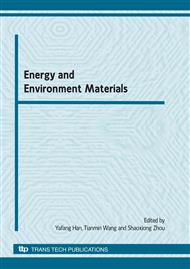p.313
p.320
p.324
p.330
p.336
p.343
p.347
p.355
p.361
Study on the Mass Transfer Process in Pan Wet-Spinning
Abstract:
In order to reveal the formation mechanism in PAN wet-spinning process, the Magnifying Method was used to determine the mass transfer rate difference between solvent and coagulant by measuring the weight loss percent of the spinning dope at different interval in the coagulation bath. Then the effect of coagulation condition on and on structure and properties of as-spun fibers was discussed. It was found that increased along with hoist of the molecular volume of coagulants or the coagulation bath temperature but decreased with the increase of the dope solid content or coagulation bath concentration. When the coagulation condition was very moderate(high solid content, low bath temperature or high bath concentration), the was smaller, the counter-diffusion took place slowly and peacefully, and sequentially an even and compact meshwork microstructure was obtained, thus the density and breaking tenacity of as-spun fibers increased gradually.
Info:
Periodical:
Pages:
336-342
Citation:
Online since:
May 2010
Authors:
Price:
Сopyright:
© 2010 Trans Tech Publications Ltd. All Rights Reserved
Share:
Citation:


